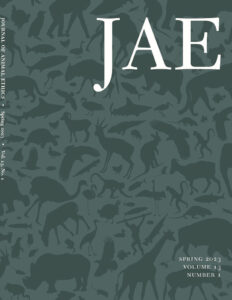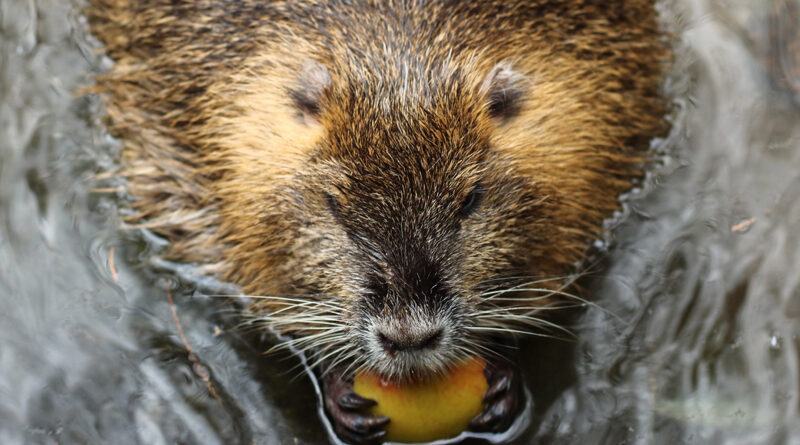REWILDING CONCERNS ANIMAL ETHICISTS
A challenge to the ethical basis of ‘rewilding’ or ‘reintroductions’ of formerly ‘native’ animals has been made by two animal ethicists.
Often rewilding or reintroductions of native species that have disappeared from an area (usually due to habitat loss or ‘conflict’ with humans) is seen as a good conservation move. And it can be – when done properly. However, when the impact of the reintroduction is not fully considered, it can lead to the deaths of animals.
Arguing that their forecasts have been proved correct, the Directors of the Oxford Centre for Animal Ethics, Professor Andrew Linzey and Dr Clair Linzey, maintain that “it is ethically questionable to reintroduce species unless humans are now prepared to tolerate them … the question has to be asked: what good does it do to the released animals if one is only setting up new conflicts between the animals and humans whereby the animals will always be the losers?”
A good example of this is the reintroduction of beavers into Scotland since 2009.
“The beaver population has steadily increased, such that now NatureScot, the Scottish Government’s nature agency, says the beavers are causing ‘problems’ and ‘pose a risk of serious damage to farmland.’ Thus, despite beavers becoming a European Protected Species in 2019, by summer 2021 NatureScot issued licenses to kill beavers, and over 200 have reportedly been killed. This is but one example of what we forecast would happen, namely, the snaring, shooting, or poisoning of reintroduced species.” explains Dr Linzey.
“The warnings we (and others) have given have simply not been heeded. The result is that scientists or ‘conservationists’ now apparently have the right to introduce species when and where they think it may aid ‘biodiversity’ without moral censure or ethical debate.” Added Professor Linzey.
According to the Oxford Centre for Animal Ethics, the key here is that “reintroductions need to be subject to ethical scrutiny.” This scrutiny needs to involve a larger consultation period to account for “likely ecological disruption,”. The reintroduction must include “a genuine and demonstrable tolerance toward reintroduced species to prevent the repetition of previous attempts at extermination,” and it must ensure that the species will “not be reintroduced into environments where they will inevitably be subject to harm from human beings.”
In words of the Directors, the current approach to reintroduction of species means that “Animals are now being subject to a gigantic scientific experiment in their supposed best interests, but which can only generate more conflict and killing in the long run.”
The full argument appears in the Spring 2023 issue of the Journal of Animal Ethics (“From the Editors: As We Forecast”, pp. v-vii).
FACT BOX
The Oxford Centre for Animal Ethics is an independent centre devoted to pioneering ethical perspectives on animals through research, teaching, and publication. See oxfordanimalethics.com

 Professor Andrew Linzey and Dr Clair Linzey are Directors of the Oxford Centre for Animal Ethics. Previously published work includes Animal Ethics for Veterinarians (University of Illinois Press), Ethical Vegetarianism and Veganism (Routledge), The Ethical Case against Animal Experiments (University of Illinois Press), The Palgrave Handbook of Practical Animal Ethics (Palgrave Macmillan), and The Routledge Handbook of Religion and Animal Ethics (Routledge).
Professor Andrew Linzey and Dr Clair Linzey are Directors of the Oxford Centre for Animal Ethics. Previously published work includes Animal Ethics for Veterinarians (University of Illinois Press), Ethical Vegetarianism and Veganism (Routledge), The Ethical Case against Animal Experiments (University of Illinois Press), The Palgrave Handbook of Practical Animal Ethics (Palgrave Macmillan), and The Routledge Handbook of Religion and Animal Ethics (Routledge).
 The Journal of Animal Ethics is an international, multidisciplinary, peer reviewed journal published by the University of Illinois Press. See press.uillinois.edu/journals
The Journal of Animal Ethics is an international, multidisciplinary, peer reviewed journal published by the University of Illinois Press. See press.uillinois.edu/journals
Beaver image: Niklas Jeromin

